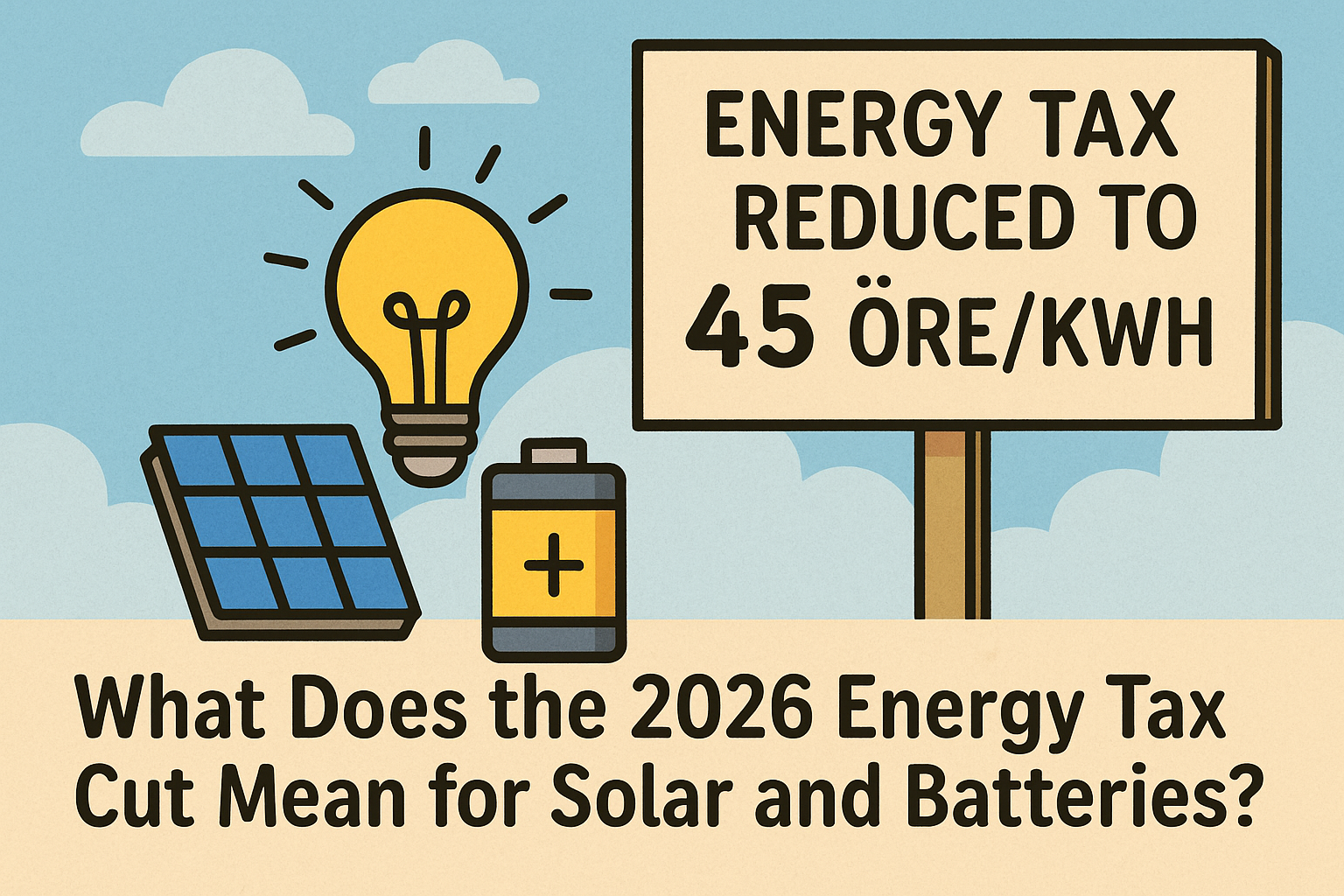In the autumn budget, the Swedish government announced a significant relief for all electricity consumers:
From January 1, 2026, the energy tax on electricity will be reduced by 9.88 öre/kWh (including VAT).
Today, the tax is 43.9 öre/kWh – 54.88 öre/kWh including VAT – and in recent years it has been adjusted annually in line with the consumer price index (CPI), most recently by +2.6% at the start of 2025. From 2026, the tax will instead be around 45 öre/kWh including VAT.
For a household that buys approximately 15,000 kWh of electricity per year, this reduction corresponds to annual savings of around 1,500 SEK.
What Does Energy Tax Cut Mean for Solar Owners?
The energy tax is part of the total electricity bill, and when it is reduced, the value of avoiding grid purchases decreases slightly. In practice, each self-consumed kilowatt hour of solar power saves a bit less.
But the bigger picture remains clear:
- Self-consumption is still the most valuable kilowatt hour.
You avoid paying spot price, grid fees, energy tax, and VAT. - The reduction is small compared to price volatility.
Spot prices can swing several SEK/kWh in just a few hours – far more than 10 öre.
The Role of Batteries
Batteries are typically used to shift solar energy from daytime to evening, when household demand is higher. With a lower energy tax, the cost of buying electricity in the evening falls slightly, reducing the direct savings per battery cycle.
Still, batteries retain their core value:
- Increased self-consumption: More of your solar energy stays in the home.
- Protection against price spikes: Evening and winter prices can be far higher than the tax cut.
- Resilience: Backup power during outages.
In short: Batteries don’t become less interesting, but their payback period may be slightly longer.
Strategic Takeaways
- Solar panels: Still profitable. A few öre less saved per kWh makes little difference in the long run.
- Batteries: Their value lies in self-consumption, flexibility, and avoiding price spikes rather than the tax.
- Timing: The decision doesn’t radically change the investment case. More important are your consumption pattern, grid fees, and storage capacity.
Conclusion On The Energy Tax Cut
The energy tax cut from January 2026 will provide welcome relief on electricity bills. For households with solar and batteries, bought electricity will become cheaper – but self-consumed solar power remains by far the most valuable kilowatt hour.
Batteries remain a key tool for maximizing self-use and resilience. And if the past years have taught us anything, it’s that electricity prices can fluctuate far more than 10 öre.
Our strategy stands: solar first, the battery as a buffer – and the grid as the last resort.

No responses yet